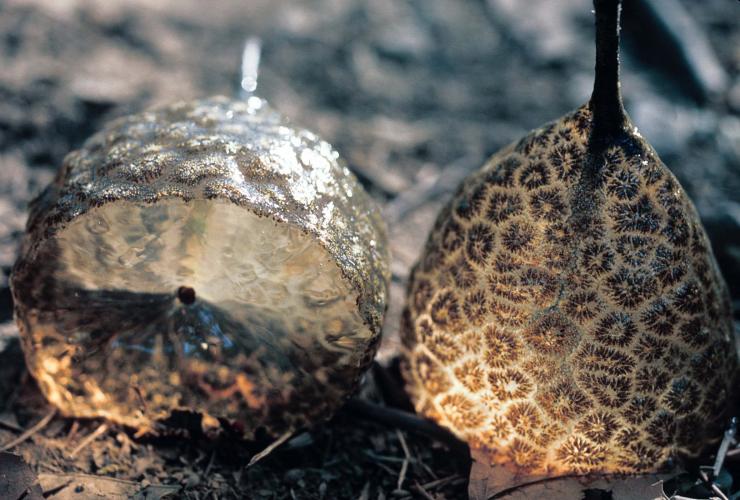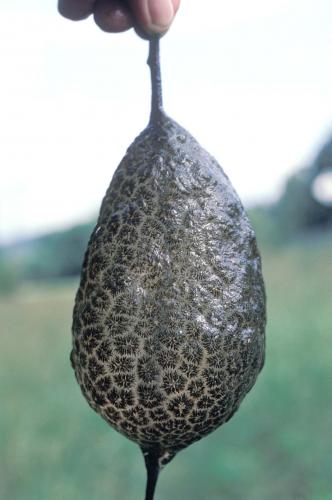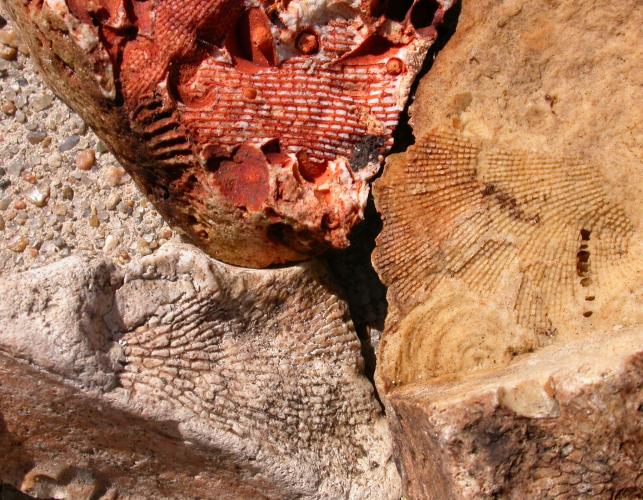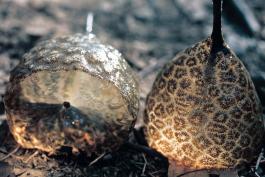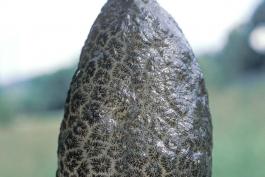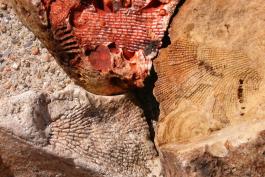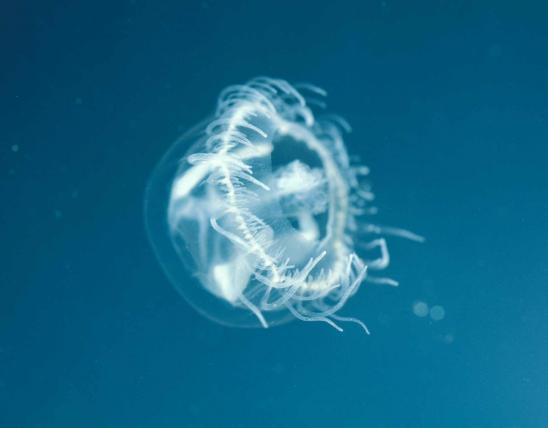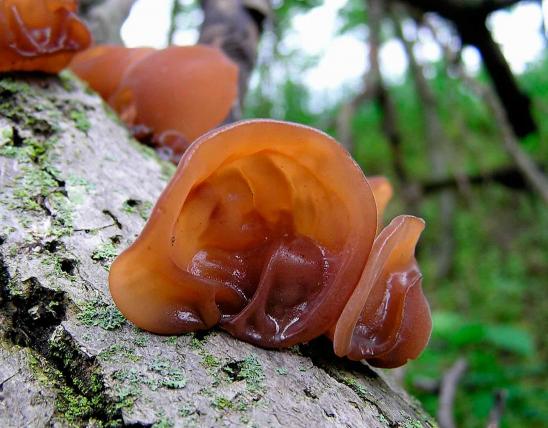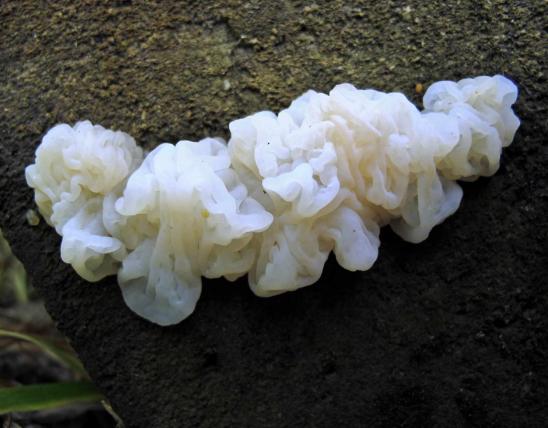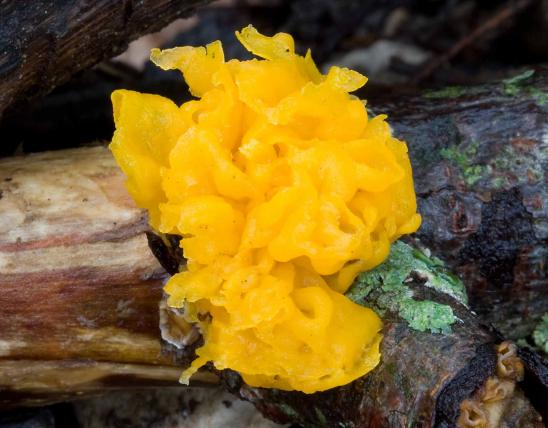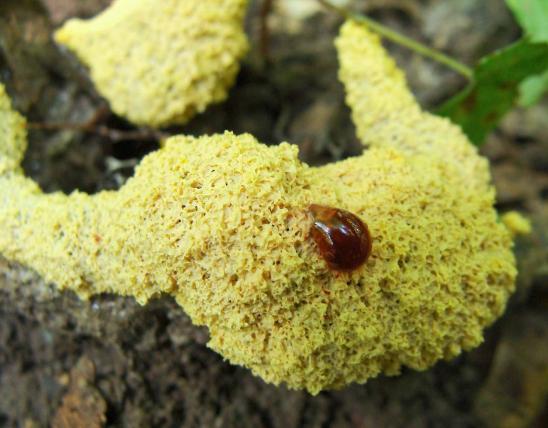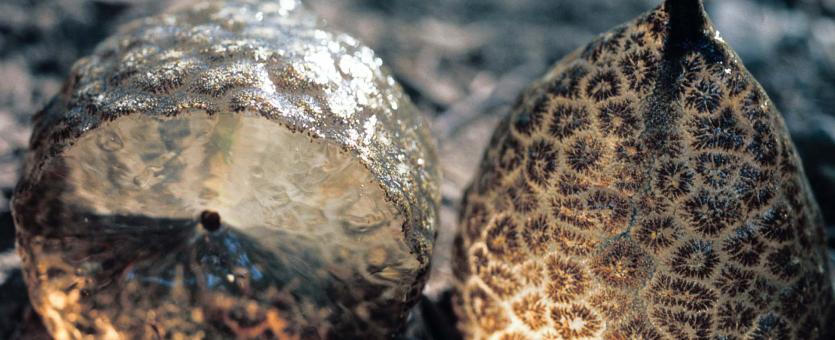
Bryozoans are microscopic aquatic invertebrates that live in colonies. The colonies of different species take different forms, building exoskeletons (outer protective structures) similar to those of corals. Most colonies are attached to a structure such as a rock or submerged branch. Freshwater bryozoans' exoskeletons are gelatinous (like jelly) or chitinous (like the "shells" of insects). Therefore, some colonies take the form of rounded, jellylike masses, while others resemble antlers or mosses (bryophyte means “moss animal”), or trace delicately like vines across rocks, or create furry-looking colonies. The species that creates the round, jellylike masses most often seen in Missouri is Pectinatella magnifica.
With enough magnification, you can see tiny individual bryozoans (zooids). Each zooid is attached to a surface at its base. Its body has an outer sleevelike structure (a cystid) and a mass of organs (a polypide) that moves within it. An opening at the top of the cystid permits the polypide to slide outward toward the water, exposing a headlike structure (lophophore) crowned with tentacles, which filter food from water. At the slightest disturbance, the polypide and tentacles retract instantly.
Varies by species. Colonies are usually no more than 2–4 inches long or high, but some can be 12 inches or wider. Viewing individual zooids requires a hand lens.
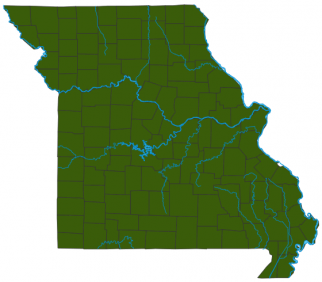
Widely distributed and common. Often overlooked because most colonies are small and unremarkable.
Habitat and Conservation
Worldwide, bryozoans are found on every continent except Antarctica. Although most bryozoans are marine, one class (Phylactolaemata) lives only in freshwater. About 20 freshwater species occur on our continent. These usually prefer the rather quiet waters of lakes, ponds, and swamps, but some live in streams. Most bryozoan colonies are sessile (attached to some object, such as a rock, dock support, or tree branch), and most form in spring and die away in winter. Colonies reach their largest size in late summer and fall, which is when most people notice them.
Food
Each zooid's tiny, mucous-coated tentacles trap diatoms and other microscopic organisms, which are swept to the mouth via cilia (tiny hairs) that line the tentacles. The mouth is at the base of the tentacles. The digestive tract is shaped like a U, with the anus just below the ring of tentacles. In nearly all freshwater bryozoans, the lophophore (headlike structure that bears the tentacles) is horseshoe-shaped.
Status
It’s not clear how bryozoans are related to other invertebrates. Bryozoans are not closely related to other groups and probably evolved from a marine worm that became adapted to a sessile existence. Fossil bryozoans first appear in Cambrian rocks, rather late in the fossil record. They probably existed earlier, however, in soft forms that did not secrete calcarious exoskeletons that would leave fossil evidence. Bryozoans are common fossils in Missouri; many look lacy, others screwlike.
Life Cycle
Bryozoans can reproduce in several ways. Zooids can “clone” themselves by budding, but they can also create eggs and sperm and reproduce sexually. Larval forms undergo complete metamorphosis. Within their bodies, freshwater bryozoans form hard, round statoblasts, which function like seeds. In winter or during drought, the colonies die, but the dissolving dead zooids free the statoblasts, which can disperse widely. These endure until conditions permit new growth. Each statoblast can create a new colony.
Human Connections
Freshwater bryozoans are harmless, though they occasionally clog water pipes and sewage treatment equipment. Others are parasitized by certain species of myxozoan invertebrates, which cause proliferative kidney disease in salmon and their relatives.
Ecosystem Connections
Bryozoans eat microscopic organisms and are eaten by several larger aquatic predators, including fish and insects. Snails graze on them, too. Like mussels and other filter feeders, bryozoans gradually cleanse the water as they feed. Also, their presence usually indicates good water quality.
